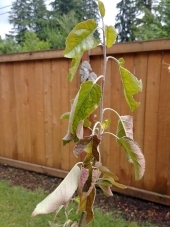




 1
1




 2
2




Mediterranean climate, hugel trenches, fabulous clay soil high in nutrients, self-watering containers with hugel layers, keyhole composting with low hugel raised beds, thick Back to Eden Wood chips mulch (distinguished from Bark chips), using as many native plants as possible....all drought tolerant.

 1
1




List of Bryant RedHawk's Epic Soil Series Threads We love visitors, that's why we live in a secluded cabin deep in the woods. "Buzzard's Roost (Asnikiye Heca) Farm." Promoting permaculture to save our planet.
 1
1




















trinda storey wrote:wow thanks for the fantastic feedback. i am in zone 8a, seattle area. we are having a weird hot summer and it is forested that we are not going to have a winter. i was planing on ordering my trees from bobwells nursery, he has them available now.
List of Bryant RedHawk's Epic Soil Series Threads We love visitors, that's why we live in a secluded cabin deep in the woods. "Buzzard's Roost (Asnikiye Heca) Farm." Promoting permaculture to save our planet.




Our bare root tree shipping season begins October 1st each season and continues through June 1st. If you place a bare root tree order after June 1st, we will not ship it until October 1st, because bare root trees need to be planted when it is not so hot outside.
















John Wolfram wrote:It looks like Bob Well's won't ship until at least October 1 because otherwise it's too hot. From their website:
Our bare root tree shipping season begins October 1st each season and continues through June 1st. If you place a bare root tree order after June 1st, we will not ship it until October 1st, because bare root trees need to be planted when it is not so hot outside.
https://bobwellsnursery.com/
List of Bryant RedHawk's Epic Soil Series Threads We love visitors, that's why we live in a secluded cabin deep in the woods. "Buzzard's Roost (Asnikiye Heca) Farm." Promoting permaculture to save our planet.

|
Wow! It's so clean! Did you do this tiny ad?
Play Your Way to a Sustainable Lifestyle: Uncover Permaculture Principles with Each Card
https://gardener-gift.com/
|


